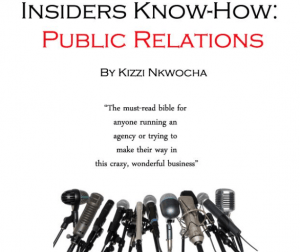 One of our number – Jessica Hodkinson is a published author having been asked to contribute to…. Insiders Know-How: Public Relations, Mithra Publishing at www.mithrapublishing.com
One of our number – Jessica Hodkinson is a published author having been asked to contribute to…. Insiders Know-How: Public Relations, Mithra Publishing at www.mithrapublishing.com
Facebook is such an open space that allows anyone to voice their opinions, discuss problems and share bad experiences amongst others. When a business decides to use social media as a customer service platform it is essential that an engagement strategy is put in place and queries are dealt with accordingly. Why? Because it is the consumers whom are making 500 billion influence impressions on one another about products and services every year.
When a customer receives a bad service or has a disappointing experience, it is very easy for them to voice it to others which will then spread quite rapidly in such a wide open space.
The image below highlights Shannon and Weaver’s basic communication model which demonstrates a message being sent to the receiver but in the process, being distorted by noise. This noise can be anything which acts as a source of interference.
As you have many influencers in one place on a Facebook fan page, noise can build up quite swiftly, leading to a message being distorted by others whom are active on the page and therefore changing everyone’s perception of the original message.
It is more likely that people will be influenced by comments on Facebook as 78% of people trust their social networks VS 55% who trust what they see on TV.
The Problem
Facebook fan pages are the prime place for people to complain and these complaints can be the most difficult to tackle. They are displayed in a place for everyone to see and fans of your group to discuss, meaning viral word of mouth soon develops. A bad experience will usually be shared with ten other people but if your brand page has over 7,000 fans this activity can be seen and heard by an increasingly high number of people.
In a study carried out by the CMO council of 1300 consumers and 132 senior marketers, 46% of consumers stated that they would expect a reply to their query within 24 hours.
When a customer vents their anger openly and publicly it can be one of the most difficult problems to tackle. To everyone that is familiar with PR, reputation is one of the key elements of a successful business. It may seem easy to ignore comments that are nasty and bitter but this is probably one of the worst things you can do and it can be a lot more detrimental than ignoring an email. Customers can soon feel neglected if they do not obtain a response that indicates you care about them. The worst thing you can do is delete comments as this adds fuel to the fire and an angry customer can soon enter the red zone, leading to added problems.
How do you tackle this negativity and what is the solution?
Think of a solution to the pending problem and respond like you would in person or over the telephone. If the comment indicates you are at fault, ‘remember your customer is always right (even if it doesn’t seem that way)’ and apologise before you even begin to solve the issue.
Once you have responded to a query, ensure that yourself or someone in your organisation monitors the conversation taking place on Facebook and follows up any responses. This professional reaction will reassure customers that you are a proactive business and you care.
If a customer has threatened to spread bad vibes about your company or starts to use aggressive language, it is best to contact this person directly so that you can solve the matter out of the public eye. Customers will appreciate the fact that you have taken the time to focus on them as an individual and you may be able to win back their trust and change the outcome to something more positive.
Turning a customer complaint around, can lead to progressive activity such as receiving a worthy comment like the below:
“I had a real moan about your company yesterday – as you were unable to supply a bag that I specifically ordered. In hindsight, I can appreciate that you must have been incredibly busy over the Christmas period, and I thank you for your email of apology from ———-. I would order from you again, and apologise, once again for my bad manners.”
This will reassure other members of your page that you are a company that deals and attempts to resolve complaints respectively.
When using channels like Twitter and Facebook as a means of communication, you have to remember to remain proactive and what you say publicly and openly can be seen by the majority of your customer base. Twitter is almost more powerful than email as you can ask a question that is seen by everyone and encourage a much quicker response.
The bottom line is; consumers want more experiences, more engagement, more rewards, and more reasons to connect with brands through social media. It is about listening to whole communities and not just single opinions.
